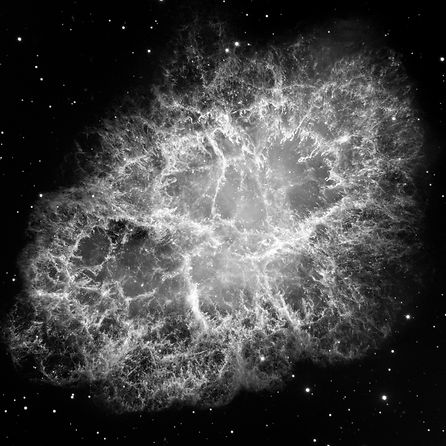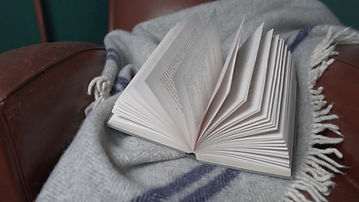

Durham MSc
This page contains all the notes/dissertation I made for the Particles, Strings & Cosmology MSc at Durham Uni.

Twistor Theory
(Summer Projcet)
Abstract:
This project aims to introduce twistor theory at the level of a masters student in theoretical physics. We focus on the geometrical aspects of twistor theory, presenting the incidence relations and how they relate the geometry of complex Minkowski space, MC, to projective twistor space, PT: a point in MC corresponds to a line in PT; and two intersecting lines in PT (which define a point in PT) correspond to null separated points in MC. The main result is a reasonably detailed presentation of the linear Penrose transform; an isomorphism which relates the solutions of zero-rest-mass field equations with helicity n and the first Čech cohomology group Hˇ 1(PT±; O(−n − 2)) on projective twistor space. We also present several other neat twistor theory results, including a demonstration of how to encode the conformal structure of the spacetime in twistor space.
Amplitudes
These are my notes on the "Amplitudes" course taught at Durham University in 2020.
The course presents scatting amplitude calculations from a modern, spinor-helicity, formalism. In particular we focus on spin-1 purely gluonic amplitudes. The Parke-Taylor formula for MHV amplitudes and the BCFW recursion relation are derived.
By presenting amplitudes in this way, we highlight underlying symmetries that are non-manifest in the Feynman diagram approach.
The course was taught over 4 weeks and lasted 8 hours.

Supersymmetry
These are my notes on the "SUSY" course given at Durham University in 2020.
We work through the steps needed to construct SUSY QFTs, first presenting SUSY itself and discussing supermultiplets (irreps of the SUSY algebra). We then also present a method for constructing SUSY actions in order to obtain off-shell fields.
Comments/short sections on other related material is also included. For example the non-renormalisable theorem for superpotentials is briefly discussed.
I have typed up all the lectured material, and plan to come back and type up the non-lectured material on the non-linear sigma model and spontaneous SUSY breaking.
The course was taught over 4 weeks and lasted 16 hours.
Conformal Field Theory
These are my notes on the "CFT" course given at Durham University in 2020.
Part I of the course discusses D>2 CFTs and introduces a lot of machinery for studying CFTs. We also touch on Bootstrap techniques and their uses.
Part II of the course discusses D=2 CFTs and points out the differences that arise there. String theory is touched upon, but more as an example then a study.
The course was taught over 4 weeks and lasted 16 hours.

Quantum Field Theory II
These are my notes on the "QFT II" course given at Durham University in 2019. This course builds on the QFT I course and studies QFT from the path integral approach. We discuss renormalisation as well as showing how to quantise gauge (both Abelian and non-Abelian) theories in the path integral approach.
The course was taught over 4 weeks and lasted 16 hours. There was a strike during the course and 6 hours of the course were not taught. However, Dr. Iqbal gave us notes for the bits missed, so this additional material is also included.
Quantum Electrodynamics
These are my notes on the "QED" course given at Durham University in 2019. This course studies quantum electrodynamics, which is the QFT for the electromagnetic interactions.
This course is essentially a course on the renormalisation of QED and a large chunk of it is dedicated to doing 1-loop renormalisation.
The course was taught over 4 weeks and lasted 16 hours.

Quantum Field Theory I
These are my notes on the "QFT I" course given at Durham University in 2019. This is only a short course designed to introduce the concepts of path integrals. It doesn't actually deal with QFT itself, but instead studies QM in 1-dimension in terms of path integrals. The follow up course, QFT II, will deal with the actual QFT.
The course was taught over 4 weeks and lasted 8 hours.
Group Theory
(For Particle Physicists)
These are my notes on the "Group Theory (For Particle Physicists)" course given at Durham University in 2019. The course starts by defining groups, Lie groups and Lie algebras. We then discuss representations both both and Young-Tableux diagrams. We then briefly discuss Cartan's classification of Lie algebras.
The course was taught over 3 weeks and lasted 12 hours. (Should have been longer in my opinion!)
These are now done, but I might return later and add some more information.

Introduction To Field Theory
These are my notes on the "Introduction to Field Theory" course given at Durham University in 2019. The course is an introduction to quantum field theory and could just as easily be called QFT1 or something. It starts from the motivation for QFT, studies free theories, and then presents Feynman rules in order to study interacting field theory. Spin-0 and Spin-1/2 particles are addressed. Spin-1 will be addressed later in a QED course.
The course was taught over 4 weeks and lasted 24 hours.









